THE HISTORY OF KUMASI

Picture Shows Madam Patricia Agyei (right) Kumasi Metropolitan Assembly Chief Executive during her swearing in to office by Mr S. K. Boafo, former Ashanti Regional Minister.
THE HISTORY OF KUMASI
Kumasi, the capital city of the Ashanti region is located in the rain forest region of Ghana and is popularly known as "The Garden City" because of its various species of flowers and plants.It is the second-largest city in Ghana, located in the south-central part of the country, about 250 km from Accra.
Queen Elizabeth II of England gave Kumasi the name Garden City of Africa when she visited the area in the 1960s because of the varied plant life in the area.
Kumasi, the capital city of the Ashanti region is located in the rain forest region of Ghana and is popularly known as "The Garden City" because of its various species of flowers and plants.It is the second-largest city in Ghana, located in the south-central part of the country, about 250 km from Accra.
Queen Elizabeth II of England gave Kumasi the name Garden City of Africa when she visited the area in the 1960s because of the varied plant life in the area.

Lake Bosomtwe, the largest natural lake in Ghana, which empties into the Atlantic Ocean, is located approximately 32 km south of Kumasi.
While the terrain surrounding Kumasi is relatively flat, the countryside is lush with tropical vegetation.
With over 2.5 million citizens, the city spans a radius of about 18 to 20 miles.
Picture shows: Mr E. A. Owusu Ansah (in tie), current Ashanti Regional Minister in an interaction with pressmen a month after assuming office as Ashanti Regional Minister. On the extreme left is Nana Yaw Osei, Vice Chairman, Ashanti GJA, on the Minister's left is Enoch (myself) and Adu Poku of GNA-Kumasi
The largest ethnic group is the Asantes, but other ethnic groups are growing in size.
Approximately 80 percent of Christians and 20 percent Muslims, with a smaller number of adherents to traditional beliefs.
The city rose to prominence in 1695 when it became capital of the Asante Confederacy due to the activities of the then ruler, King Osei Tutu I.
King Osei Tutu I was known as the Kumasihene and he served as ruler of the Asante Confederacy.
Parts of the city, including the Royal Palace, known as Manhyia were destroyed by British troops in the Fourth Anglo-Ashanti War of 1874.
A relatively young city, Kumasi was founded in the early 19th century by King Osei Tutu. The king named the city after the Kum tree, which he planted as a symbol of victory for the Asante Empire over the British. The Asante region has been independent since 1875 even though Ghana itself only declared independence in 1957. A descendant of King Osei Tutu, Nana Osei Tutu II, is King of the Asantes today, receiving allegiance from the people within the democracy of Ghana. He is said to be the richest King on Africa's West Coast.The King resides in Kumasi, and his home, the Manhyia Palace, is one of the city's most spectacular sights. The city holds an important place in the history of the Asante people as legend has it that a golden stool in the palace descended from heaven, and Okomfo Anokye, an ancient priest received the Golden stool, which signifies an embodiment of the soul of the Asante nation.
Near the palace grounds a copper sword was said to have been driven into the ground by Okomfo Anokye, which no one has been able to remove by any means.
Kumasi remains a royal city, the role of the King has been mainly symbolic. Due to large gold deposits that have been mined in the area, Kumasi has been among the wealthier cities in Ghana. Today's major exports are timber and cocoa. Kumasi has 50 percent of the timber industry in Ghana, with more than 4,000 employed in the business.
Trade, commerce, farming and mining are leading industries in Kumasi. In addition, its region boasts a rich cultural heritage particularly evident in smaller surrounding towns. Other riches abound, with wealth derived from substantial gold deposits and agricultural products. Cocoa and high-quality hardwood (timber) are other major exports
Features of the city include the large Kumasi Central Market, Fort Kumasi (built by the British in 1896 to replace an Asante fort and now a museum) and the Kumasi Hat Museum (Built by the late Nana Kofi Genfi.

Along with history and legend, Kumasi is a fast-growing, contemporary city. It is filled with avid sports enthusiasts who are especially proud of the soccer team, the Kumasi Asanti Kotoko. The team has won numerous national and continental awards
Kumasi is also home to a zoo, the Kumasi Zoological Gardens, which is next to the Centre of National Culture (CNC), the Kwame Nkrumah University of Science and Technology of Ghana (formerly the Kumasi College of Technology).
The Kumasi area has one public hospital (Komfo Anokye Teaching Hospital, 736 beds), five public clinics and 57 private clinics (1992 figures).
The city's most famous child is the current general-secretary of the United Nations, Kofi Annan. The local football (soccer) team, the Kumasi Asante Kotoko has won several national and continental awards. The Kumasi Sports Stadium was built in 1959 and renovated in 1978 with a seating capacity of 80,000 the largest in the country. It is currently undergoing another renovation in readiness for CAN 2008, which is being hosted in Ghana.
Kumasi is home to numerous educational institutions, including the University of Science and Technology, one of Ghana's premiere facilities of higher learning. English is the official language of Kumasi, and its native language is Asanti (TWI).
While the terrain surrounding Kumasi is relatively flat, the countryside is lush with tropical vegetation.
With over 2.5 million citizens, the city spans a radius of about 18 to 20 miles.
Picture shows: Mr E. A. Owusu Ansah (in tie), current Ashanti Regional Minister in an interaction with pressmen a month after assuming office as Ashanti Regional Minister. On the extreme left is Nana Yaw Osei, Vice Chairman, Ashanti GJA, on the Minister's left is Enoch (myself) and Adu Poku of GNA-Kumasi
The largest ethnic group is the Asantes, but other ethnic groups are growing in size.
Approximately 80 percent of Christians and 20 percent Muslims, with a smaller number of adherents to traditional beliefs.
The city rose to prominence in 1695 when it became capital of the Asante Confederacy due to the activities of the then ruler, King Osei Tutu I.
King Osei Tutu I was known as the Kumasihene and he served as ruler of the Asante Confederacy.
Parts of the city, including the Royal Palace, known as Manhyia were destroyed by British troops in the Fourth Anglo-Ashanti War of 1874.
A relatively young city, Kumasi was founded in the early 19th century by King Osei Tutu. The king named the city after the Kum tree, which he planted as a symbol of victory for the Asante Empire over the British. The Asante region has been independent since 1875 even though Ghana itself only declared independence in 1957. A descendant of King Osei Tutu, Nana Osei Tutu II, is King of the Asantes today, receiving allegiance from the people within the democracy of Ghana. He is said to be the richest King on Africa's West Coast.The King resides in Kumasi, and his home, the Manhyia Palace, is one of the city's most spectacular sights. The city holds an important place in the history of the Asante people as legend has it that a golden stool in the palace descended from heaven, and Okomfo Anokye, an ancient priest received the Golden stool, which signifies an embodiment of the soul of the Asante nation.
Near the palace grounds a copper sword was said to have been driven into the ground by Okomfo Anokye, which no one has been able to remove by any means.
Kumasi remains a royal city, the role of the King has been mainly symbolic. Due to large gold deposits that have been mined in the area, Kumasi has been among the wealthier cities in Ghana. Today's major exports are timber and cocoa. Kumasi has 50 percent of the timber industry in Ghana, with more than 4,000 employed in the business.
Trade, commerce, farming and mining are leading industries in Kumasi. In addition, its region boasts a rich cultural heritage particularly evident in smaller surrounding towns. Other riches abound, with wealth derived from substantial gold deposits and agricultural products. Cocoa and high-quality hardwood (timber) are other major exports
Features of the city include the large Kumasi Central Market, Fort Kumasi (built by the British in 1896 to replace an Asante fort and now a museum) and the Kumasi Hat Museum (Built by the late Nana Kofi Genfi.

Picture Shows Madam Patricia Agyei (right) Kumasi Metropolitan Assembly Chief Executive during her swearing in to office by Mr S. K. Boafo, former Ashanti Regional Minister.
Royal Asante attractions include the Kumasi National Cultural Centre (including the Prempeh II Jubilee Museum with various Asante regalia including a reproduction of the golden stool), the Okomfo Anokye Sword being hosted at the Komfo Anokye Teaching Hospital, the Asantehene's Palace (built in 1972), and the Manhyia Palace, dating from 1925, now a museum.Along with history and legend, Kumasi is a fast-growing, contemporary city. It is filled with avid sports enthusiasts who are especially proud of the soccer team, the Kumasi Asanti Kotoko. The team has won numerous national and continental awards
Kumasi is also home to a zoo, the Kumasi Zoological Gardens, which is next to the Centre of National Culture (CNC), the Kwame Nkrumah University of Science and Technology of Ghana (formerly the Kumasi College of Technology).
The Kumasi area has one public hospital (Komfo Anokye Teaching Hospital, 736 beds), five public clinics and 57 private clinics (1992 figures).
The city's most famous child is the current general-secretary of the United Nations, Kofi Annan. The local football (soccer) team, the Kumasi Asante Kotoko has won several national and continental awards. The Kumasi Sports Stadium was built in 1959 and renovated in 1978 with a seating capacity of 80,000 the largest in the country. It is currently undergoing another renovation in readiness for CAN 2008, which is being hosted in Ghana.
Kumasi is home to numerous educational institutions, including the University of Science and Technology, one of Ghana's premiere facilities of higher learning. English is the official language of Kumasi, and its native language is Asanti (TWI).





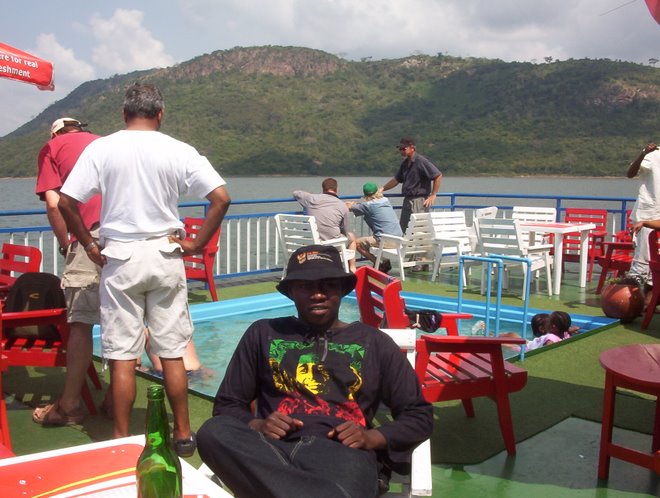




















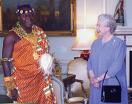



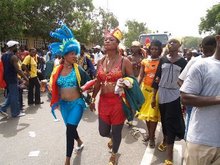
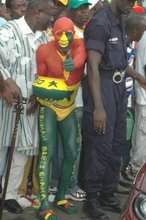

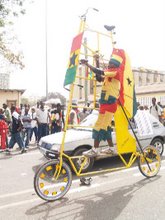
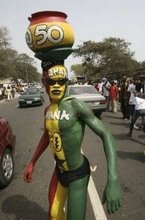




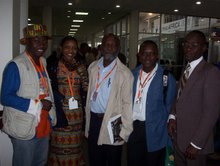
No comments:
Post a Comment